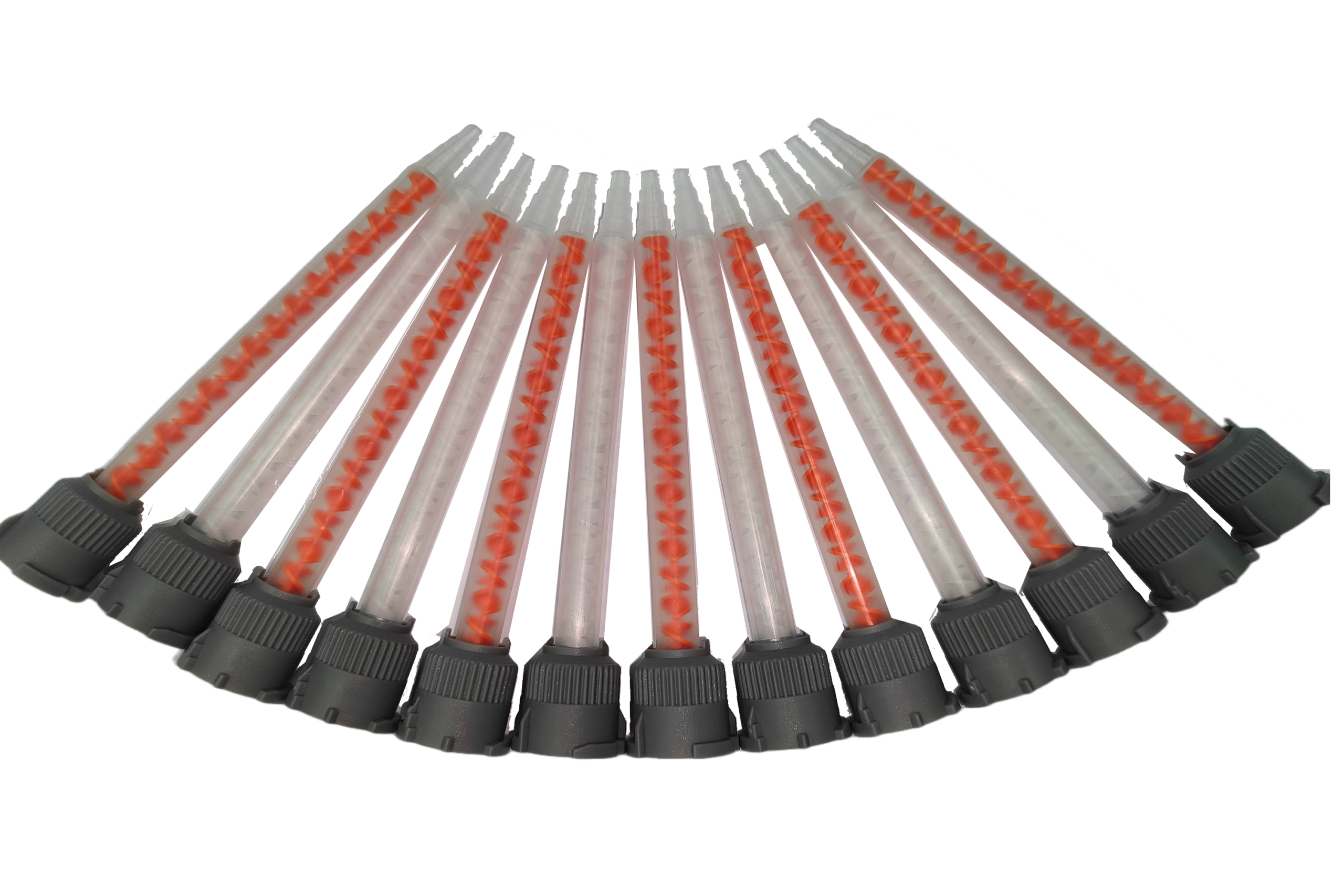Epoxy mixing nozzles have come a long way since their inception, revolutionizing the process of blending two-component epoxy materials. This article delves into the intriguing history of these indispensable tools, tracing their evolution from humble beginnings to the sophisticated designs of today. Join us on a journey through time as we explore the key milestones and innovations that have shaped the history of epoxy mixing nozzles.
Early Beginnings:
The roots of epoxy mixing nozzles can be traced back to the emergence of epoxy resins and adhesives in the mid-20th century. In the early years, mixing epoxy components was a manual process involving measuring, mixing, and stirring. This method was time-consuming, imprecise, and prone to human error.
Emergence of Dual-Cartridge Systems:
The development of dual-cartridge dispensing systems marked a significant turning point in the history of epoxy mixing nozzles. In the 1970s, the introduction of dual-cartridge systems allowed for separate storage and controlled dispensing of epoxy resin and hardener. This innovative approach eliminated the need for manual mixing, improving efficiency, and reducing waste.

Birth of Mixing Nozzles:
With the advent of dual-cartridge systems, engineers and researchers recognized the need for a more efficient and reliable method of blending epoxy components. The concept of mixing nozzles emerged as a solution to this challenge. These early mixing nozzles consisted of simple, straight channels where the resin and hardener would combine during dispensing.
Advancements in Design and Engineering:
As the demand for precise mixing ratios and consistent results increased, manufacturers began focusing on enhancing the design and engineering of epoxy mixing nozzles. The early mixing nozzles gave way to more sophisticated designs, incorporating features such as helical mixing elements, static mixing elements, and spiral channels.
Helical Mixing Elements:
Helical mixing elements were among the earliest improvements introduced to epoxy mixing nozzles. These elements consisted of twisted vanes within the nozzle, promoting turbulent flow and thorough mixing. The rotation and geometry of the helical elements ensured efficient blending of the epoxy components, leading to improved adhesive performance.
Static Mixing Elements:
Static mixing elements represent another major advancement in epoxy mixing nozzle technology. These elements are fixed structures within the nozzle that redirect and divide the flow, increasing the interfacial area and promoting mixing. The precise arrangement and geometry of the static elements facilitate consistent blending, resulting in homogeneous mixtures.
Spiral Channels:
Spiral channels further refined the mixing process within epoxy mixing nozzles. These channels, often combined with static mixing elements, induce additional turbulence and flow redirection. The intricate spiral patterns ensure multiple interactions between the resin and hardener, enhancing the degree of mixing and producing more uniform results.
Contemporary Innovations:
In recent years, epoxy mixing nozzles have witnessed continuous advancements in material science, flow dynamics, and manufacturing techniques. Manufacturers are exploring new materials with improved durability and resistance to aggressive chemicals. Computational fluid dynamics (CFD) simulations and 3D printing technologies are used to optimize nozzle design and enhance performance.
Conclusion:
The history of epoxy mixing nozzles is a testament to the tireless pursuit of precision and efficiency in the manufacturing world. From manual mixing to the advent of dual-cartridge systems and the subsequent refinement of nozzle design, these tools have transformed the blending process of epoxy adhesives and resins. Through advancements in engineering, materials, and manufacturing techniques, epoxy mixing nozzles have become essential components in industries ranging from construction to automotive manufacturing.
As technology continues to evolve, we can anticipate further innovations in epoxy mixing nozzle design, pushing the boundaries of precision and consistency. The fascinating history of epoxy mixing nozzles reminds us of the ingenuity and dedication of scientists, engineers, and researchers who strive to improve manufacturing processes and propel industries forward.
